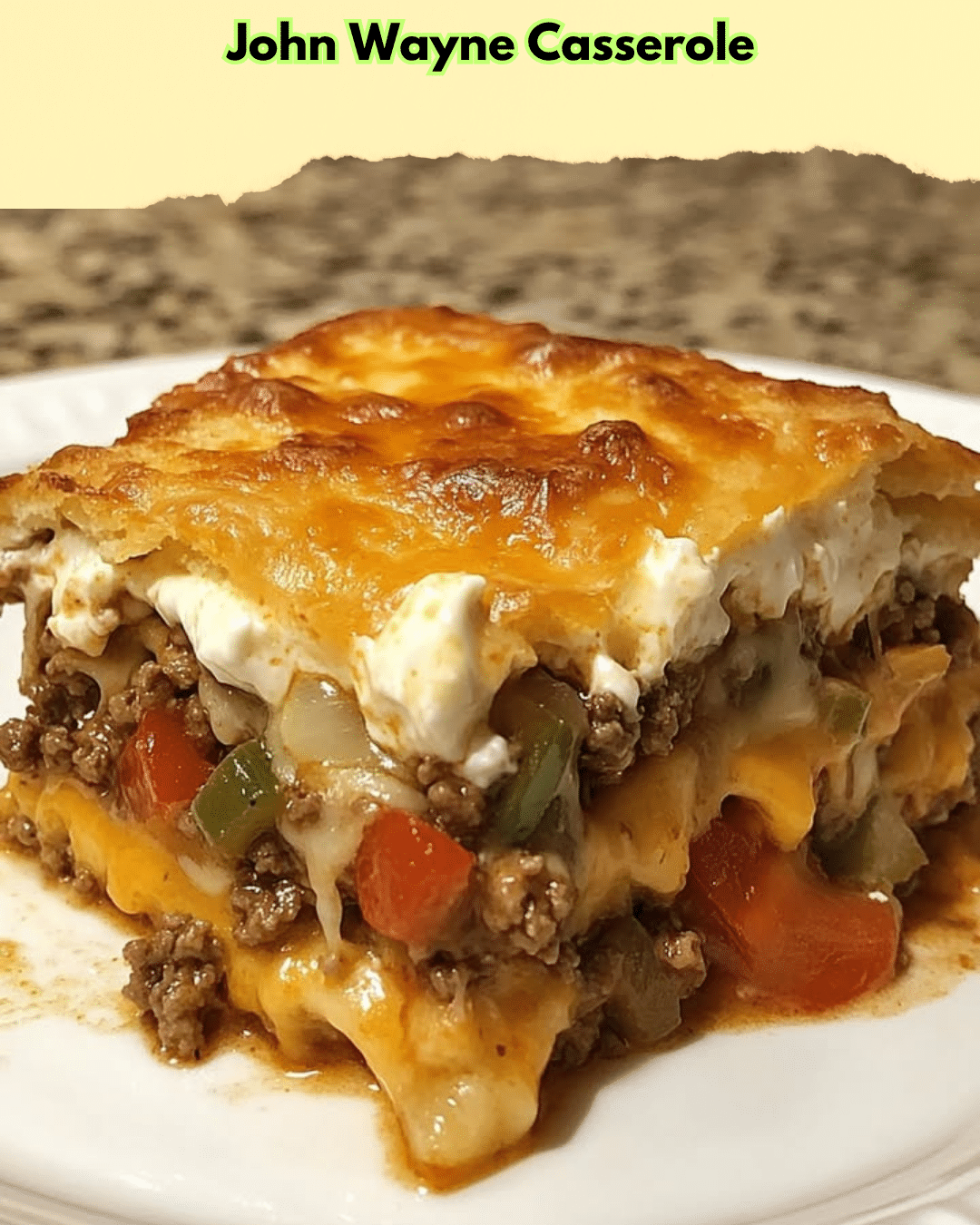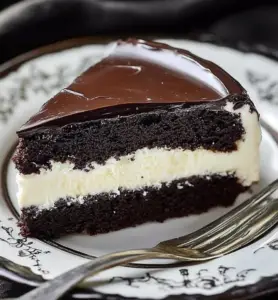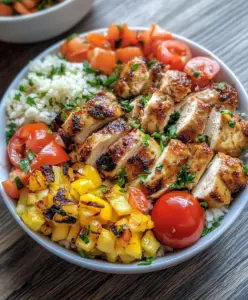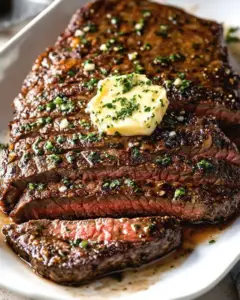John Wayne Casserole: A Hearty and Flavor-Packed American Classic
Classic, savory, and bursting with hearty flavors, the John Wayne Casserole is a cherished dish that combines beefy goodness with creamy, cheesy layers. This delightful creation pays homage to its namesake, bringing a touch of rustic charm to any dining table. From its easy preparation to its impeccable taste, this casserole is the perfect comfort food. Its layers provide contrasting textures that culminate in a culinary masterpiece that is both satisfying and warming.
The John Wayne Casserole is an all-in-one dish that satisfies both your taste buds and your appetite. Starting with a robust beef layer seasoned to perfection, the casserole embraces a variety of fresh and canned vegetables, providing an essential punch of vitamins and nutrients. Completed with a generous coating of cheddar cheese and biscuit mix—all baked to golden perfection—each serving brings loads of comforting flavors to the table, making it ideal for family dinners, gatherings, or cozy evenings at home.
Quick Recipe Highlights
Flavor Profile: The John Wayne Casserole offers a savory delight with the bold flavors of ground beef, bell peppers, and onions perfectly complemented by creamy layers of sour cream and ample cheddar cheese.
Texture: This dish harmonizes tender beef with velvety cheese and a biscuit topping that crisps up beautifully in the oven, creating layers of delicious textures.
Aroma: The casserole fills your kitchen with a mouthwatering aroma of beef and melted cheese that brings a homely, irresistible scent.
Visual Appeal: A glossy golden topping crowned with a hint of melted cheese creates a visually pleasing dish that is ready to impress any guest.
Skill Level Needed: Moderate cooking skills are required, involving basic chopping, browning meat, and layering ingredients for baking.
Special Equipment: Prepare with a skillet for browning and a baking dish to layer and cook everything to perfection.
Recipe Overview
Difficulty Level: The level is considered medium, as it involves multiple steps, such as browning meat, mixing topping, and layer assembly, but provides detailed instructions for ease.
Category: This dish falls under main courses, perfect for evening meals or special occasions.
Cuisine: The John Wayne Casserole reflects the comfort-oriented, bold flavors of classic American cuisine, embodying a hearty and welcoming appeal.
Cost: This dish is budget-friendly, relying on accessible ingredients like ground beef, canned vegetables, and cheese, making it affordable when cooking for a crowd.
Season: While perfect for any season, its warm, comforting nature makes it especially ideal for fall and winter months.
Occasion: Suitable for family dinners or potlucks, its comforting flavors and satisfying portions ensure everyone is filled and happy.
Why You’ll Love This Recipe
The John Wayne Casserole promises delectable taste and texture making every bite a memorable experience. Its layers of ingredients present a magnificent medley of savory beef and creamy cheese, balanced by the crisp biscuit top and tender vegetables. Each element complements the other, showcasing a symphony of flavors enjoyed by all.
Preparation is a breeze, ideal for busy weeknights or a quick weekend dish. Its simplicity doesn’t compromise taste, making it a popular choice for those seeking a delicious yet straightforward meal option. Minimal cleanup is required, and its simple ingredient list doesn’t demand specialized experience.
Nutritional advantages enhance its appeal with ground beef providing protein, fresh vegetables offering vitamins and minerals, and the dairy elements lending healthy fats. The filling nature of the casserole ensures nutritional satisfaction.
Beyond taste, this casserole is a fantastic choice for social gatherings. Its generous serving size caters to large groups, making it excellent for potlucks or family occasions. Its attractive appearance and rich aroma also make it an impressive centerpiece during such events.
Cost-effectiveness is another draw, with everyday ingredients that won’t break the bank. Bulk preparation ensures everyone is served, often with leftovers, showcasing both its economic and versatile nature. This casserole stands as a symbol of accessibility and heartwarming appeal, inviting all to indulge.
Historical Background and Cultural Significance
Named after the legendary actor John Wayne, this casserole brings a slice of Americana to the table, reflecting the robust and hearty tastes that symbolized his on-screen persona. Whether fact or fiction, stories abound about Wayne’s involvement with the recipe during film shoots, adding allure to its origins.
The cultural significance is deeply rooted in America’s love for comfort and convenience. Recipes similar to John Wayne Casserole have provided nourishment through multilayered, one-dish meals cherished by families for generations.
As it traveled through regions, the John Wayne Casserole evolved, with different ingredients incorporated based on local availability and preference, inspiring countless variations yet maintaining the original’s heartwarming essence.
Today, this dish serves as a testament to America’s culinary adaptability and spirit of invention, with treasured recipes passed down through families creating legacy and memory-filled mealtimes.
Ingredient Deep Dive
Ground Beef: Often the star ingredient, ground beef in this casserole brings both flavor and protein. The fat content can vary, allowing cooks to choose according to dietary preference. Storing it is easy—either fresh in cold environments or frozen long-term, with quick and easy defrost options when ready to cook.
Cheddar Cheese: Provides a rich, tangy taste that defines the casserole’s cheesy topping. Substitutions could include mozzarella or pepper jack for different flavor notes. Best stored in an airtight container in the fridge, the cheese also brings essential calcium and protein.
Canned Tomatoes: Adding tangy sweetness, canned tomatoes are an economical choice, lasting long and easy to store. Ensure they’re kept in a cool, dry place. Alternate options may include fresh tomatoes diced or roasted for deeper flavors.
Bell Peppers: Offering freshness and a dash of color, bell peppers should be bought firm and storage should be in the refrigerator crisper. Red or green may be used interchangeably. For those allergic, alternatives include zucchinis or mushrooms.
Onions: Foundational in creating base flavors, onions should be firm and stored in dry, cool spaces. Leeks or shallots serve as milder substitutions to relate to different taste preferences.
Common Mistakes to Avoid
1. Overbrowning the beef can lead to a tough and dry final dish.
2. Skipping vegetable sauté stages can result in undercooked ingredients.
3. Using high-fat meats might make the dish overly greasy.
4. Incorrect biscuit mix proportions could lead to a soggy top.
5. Avoid insufficient seasoning which weakens flavor profiles.
6. Rushing cooking times impacts texture and finish.
7. Ignoring the specified baking dish size may affect cooking uniformity.
8. Overloading cheese can mask other flavors.
9. Mixing hot and cold ingredients without tempering can alter the texture.
10. Failing to allow it to rest lowers setting and slicing ease.
Essential Techniques
Sautéing Vegetables: Sauté until soften which helps release natural sugars creating deep flavors.
Layering: Ensures even cooking and flavor distribution. Make layers even but not too thick.
Browning Beef: Brown in portions without crowding to retain juices enhancing flavor profiles.
Biscuit Topping: Removing excessive liquid from ingredients below keeps the biscuit layer crisp.
Pro Tips for Perfect John Wayne Casserole
1. Use a mix of cheddar and pepper jack for an adventurous twist.
2. Mix in some diced jalapeños for an added heat factor.
3. Opt for leaner beef to balance the richness of the cheese.
4. Let the casserole rest post-bake to set better for slicing.
5. Add extra vegetables like corn or black beans for variation.
6. Experiment with various biscuit mixes for a differentiated outcome.
7. Taste-test seasoning levels before the bake to ensure desired flavor.
Variations and Adaptations
Regional variations include Tex-Mex spins, featuring black beans and spices for added heat.
Seasonal adaptations could mean incorporating seasonal vegetables—like squash in fall for warmth.
Dietary modifications vary, offering options like swapping ground beef for turkey as a lean alternative.
Flavor variations might see spices like cumin or paprika added for an enhanced kick.
Texture modifications might involve substituting biscuit topping for mashed potatoes for smoothness.
Presentation alternatives include using mini-casserole dishes for individualized servings.
Serving and Presentation Guide
Plating Techniques: Use an elegant serving spoon, dish out carefully and uniformly.
Garnishing Ideas: Add fresh parsley or sliced jalapeños for vibrant color contrast.
Traditional Accompaniments: Pair with crisp salad or fresh bread for balanced meals.
Modern Serving Suggestions: Create tapas-style by serving with mini casseroles.
Temperature Considerations: Serve hot from the oven for optimal flavor.
Portion Control Tips: Use serving spoons for balanced dish servings without over-piling.
Wine and Beverage Pairing
Wine Pairings: A robust red zin complements the bold beef and cheese notes, cutting through the creaminess.
Non-Alcoholic Alternatives: Iced tea or fresh lemonade provide a sweet counterbalance to the savory meal.
Temperature Considerations: Maintain beverages cooled for refreshing contrast.
Serving Suggestions: For ideal results, serve accompanying drinks in appropriate culinary glassware enhancing diner experience.
Storage and Shelf Life
Storage Methods: Store leftovers in airtight containers to prevent drying.
Temperature Requirements: Keep refrigerated to maintain freshness up to three days.
Container Recommendations: Use non-reactive containers to avoid metallic taste.
Signs of Spoilage: Be aware of off smells or discoloration.
Reheating Instructions: Reheat in oven maintaining textures and flavors.
Freezing Guidelines: Wrap well, freeze for up to two months. Thaw overnight in fridge before heating.
Make Ahead Strategies
Prep Timeline: Prepare components in advance to minimize dish timing pressures.
Storage Between Steps: Store pre-sautéed items sealed in fridge for freshness.
Quality Impact Assessment: Keeping in layers during meal prep ensures original quality.
Assembly Tips: To prevent sogginess, layering and pre-cooling each step is key.
Reheating Guidelines: Allow time for oven reheat to restore original texture and ensure even heat throughout.
Fresh Element Additions: Finish with fresh ingredients just before serving to enhance vibrancy and flavor.
Scaling Instructions
Halving the Recipe: Maintain ingredients’ ratio, use smaller dishes to ensure structure.
Doubling or Tripling: Ingredient doubling needs dish adjustments, may require longer cooking times.
Equipment Adjustments: Larger amounts require more substantial cooking vessels, check oven capability.
Timing Modifications: Be ready for adjusted cooking timing if altering quantity.
Storage Considerations: Ensure appropriate storage space for increased leftovers, refrigeration extends shelf life.
Nutritional Deep Dive
Macro Breakdown: Protein-rich due to beef, moderate carbs from biscuit, balanced fats by cheese.
Micronutrient Analysis: Rich in vitamins A and C from veggies, calcium from cheese.
Health Benefits: Provides protein for muscle maintenance, vitamins for immunity and bone health from dairy.
Dietary Considerations: Offers broad nutritional profile but watch for sodium levels due to cheese and biscuits.
Portion Analysis: Designed for filling servings, balanced portions ensure sustained energy release.
Weight Management Tips: For lower-calorie options, leaner beef and reduced cheese work well.
Dietary Adaptations
Gluten-free: Swap wheat-based biscuit mix with a gluten-free alternative.
Dairy-free: Use lactose-free cheese varieties.
Vegan: Substitute plant-based minced meat, vegan cheese, and plant yogurts.
Low-carb: Reduce biscuit, increase veggie ratios for a more carb-conscious meal.
Keto: Almond flour crust and high-fat cheese manages carb/fat ratios.
Paleo: Opt for almond cheese and natural ground beef for evolutionary dietary alignment.
Low-FODMAP: Use lactose-free cheeses and substitute onion with green chives or garlic oils.
Troubleshooting Guide
Texture Issues: If too dry, ensure ample cheese measures to moisten.
Flavor Balance: Correct underseasoning with salt/spice touch-ups.
Temperature Problems: Extend bake time for proper set if too low.
Equipment Challenges: Ensure even equipment use for uniform cooking.
Ingredient Substitutions: Adjust moisture measures for healthier versions, compensate for component impact.
Timing Concerns: Allow resting, builds flavors, and ensures firm layer cohesion.
Recipe Success Stories
Community Feedback: Praise for predictably delightful outcomes and simplicity rates highly.
Variation Successes: Adding corn peppers for Tex-Mex versions lauded as popular tweaks.
Adaptation Stories: Reports of using turkey winning the low-fat friendly approach fans.
Reader Suggestions: Vegan versions expansive to plant-based fans with textured soy protein.
Photography Tips: Garnishing serving plates with roasted peppers or parsley enhance photogenic appeal.
Frequently Asked Questions
1. Can I use turkey instead of ground beef?
Certainly, turkey makes for a leaner option with fewer calories, creating a different flavor that pairs well with original cheese ingredients.
2. What’s the best cheese alternative for a low-fat diet?
Opt for reduced-fat cheddar or mozzarella that still provides flavor without excess calories.
3. Is it possible to use fresh tomatoes?
Yes, fresh offers a rich taste though additional simmering may be needed to achieve similar consistency achieved through canned tomatoes.
4. How can I prevent the biscuit topping from being soggy?
Ensure ingredients beneath have limited liquid and are cooled enough enabling a crisp finish.
5. Can I add other vegetables?
Indeed, versatile addition including mushrooms and zucchini balance nutrient and fiber content.
6. How do I keep leftovers fresh?
After cooling, store in airtight containers ensuring maximum freshness around three days.
7. Would replacing cheese impact overall flavor?
While alters taste texture, dairy-free variations still satisfy with plant-based cheeses maintaining creamy profiles.
8. How to make preparation time shorter?
Pre-cook beef, chop vegetables ahead, ready for excellent same-day assembly.
9. Is this dish freezer friendly?
Fully! It freezes well post-bake—ensure proper wrapping /date marking.
10. Will it taste good without bell peppers?
While peppers impart specific sweetness, adjusting seasonings and adding mushrooms finely substitutes missing elements.
11. Would an instant pot work?
While traditionally baked, leveraging an instant pot might involve utensil variation, affecting crispiness.
12. Does it suit vegetarians?
Substitute beef with plant proteins or additional mushroom for notable vegetarian-friendly manifestations.
Additional Resources
Related Recipes: Explore Tex-Mex bakes for similar inspiration.
Technique Guides: Master sauté tips enhance primary cooking skills.
Ingredients Information: Discover more about bell pepper variants or dietary cheese substitutes.
Equipment Recommendations: Ensure essential baking dish, skillet for optimal results.
Seasonal Variations: Integrate fall squashes, spring vegetables creating seasonal integrity.
Print
John Wayne Casserole
Description
A hearty layered casserole with ground beef, cheese, and jalapeños for a southwestern flair.
Ingredients
For the Crust:
- 1 pound ground beef
- 1 packet taco seasoning
- 1/2 cup water
- 1 can (10 oz) diced tomatoes with green chilies, drained
- 1 can (4 oz) green chilies, drained
- 1/2 cup sour cream
- 1/2 cup mayonnaise
- 1 cup shredded cheddar cheese
- 1 red bell pepper, sliced
- 1 onion, sliced
- 1 cup biscuit baking mix
- 1/2 cup water
Instructions
1. Prepare the Crust:
- Preheat oven to 350°F (175°C).
- Brown the ground beef in a skillet. Drain excess fat. Add taco seasoning and 1/2 cup water. Simmer for 5 minutes.
- In a bowl, mix the biscuit baking mix and 1/2 cup water to form a dough. Press dough into the bottom of a greased 9×13 inch baking dish.
- Layer the beef mixture on top of the biscuit dough.
- In a separate bowl, mix sour cream, mayonnaise, and half of the cheese. Spread this mixture over the beef layer.
- Top with tomatoes, green chilies, bell pepper, onion, and remaining cheese.
- Bake in preheated oven for 30-35 minutes or until the cheese is melted and bubbly.
Notes
You can customize the seasonings to taste.




